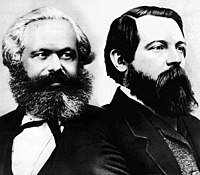
Photo from wikipedia
Abstract Incentive structures and the intensity of competition play a key role in shaping the quality and direction of creative work. Organizing incentives as stratified rewards has emerged as a… Click to show full abstract
Abstract Incentive structures and the intensity of competition play a key role in shaping the quality and direction of creative work. Organizing incentives as stratified rewards has emerged as a universal feature of modern society. However, this has implications for the producers and consumers of creative work that are not fully understood. We test the effects of reward stratification on producers, reviewers, and consumers of creative work by using data from a large online experiment of an artificial market for creative products. We find that competition induced by stratified rewards shapes the evolution of creative production. The quality of each tier in a stratified market is consistent with its position in the hierarchy. The top tier maintains high quality standards by attracting many submissions and then filtering its output, operating as an effective sorting device for budget-constrained consumers. However, reward stratification leads to higher levels of inequality and market exit among producers who fall behind in earnings, despite producing high-quality work. We discuss the broad implications of reward stratification across individual and market aggregate levels. This discussion contributes to the cumulative advantage debate in creative industries specifically, and to the creative aspects of scientific fields and industrial markets more broadly.
Journal Title: Research Policy
Year Published: 2021
Link to full text (if available)
Share on Social Media: Sign Up to like & get
recommendations!